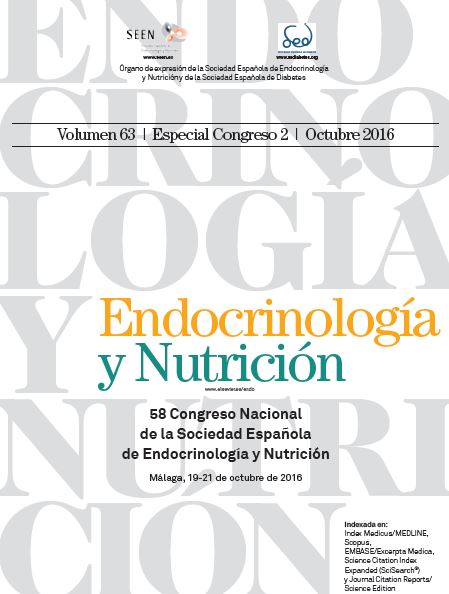25 - CHANGES IN BASAL PITUITARY FUNCTION AND MAGNETIC RESONANCE IMAGING WITH TIME IN ADULT PATIENTS PREVIOUSLY DIAGNOSED WITH CONGENITAL HYPOGONADOTROPIC HYPOGONADISM
aServicio de Endocrinología y Nutrición; bInstituto de Genética Médica y Molecular (INGEMM). Hospital Universitario La Paz. Madrid. España.
Introduction: Functional recovery of the reproductive axis has been described in patients with congenital hypogonadotropic hypogonadism (CHH). However, the development of new pituitary deficiencies in the long-term in adult patients previously diagnosed with CHH has not been reported to date. We report the results of pituitary basal function reassessment in 20 adult CHH patients, and pituitary magnetic resonance imaging (MR) in 7 of them.
Methods: We reviewed 20 CHH patients, examined their basal pituitary function, testing basal serum IGF-1, TSH, ACTH and cortisol levels, performed a pituitary MR in those showing abnormal results in at least one pituitary axis (other than gonadotropic) and compared them with MRs at diagnosis.
Results: From the total group, followed in our adult endocrinology clinic during an average of 21.2 years (13-37), 7 patients (35%) showed abnormal hormonal results. All were males, with mean age 37.2 years (29-53). Markedly low levels of IGF-1 were detected in 6/7 patients (85%), of TSH in 4/7 (57.4%) -all already treated with levothyroxine- and none of them showed abnormal ACTH or cortisol levels. Pituitary MR revealed no changes in 2 patients, when compared to their MRs at diagnosis, one with posterior ectopic pituitary and another with a pituitary of small size (3 mm). Another one had a partially empty sella (not checked at diagnosis), other 3 that previously had normal MRs showed new-onset millimetric pituitary lesions (2, 3 and 3 mm, respectively, one of them described as a pars intermedia cyst), and another that was reported to have a 5 mm pituitary lesion in 1996 showed a normal pituitary MR at the time of the study.
Conclusions: Our results suggest that, in some cases, gonadotropic failure might be the first step towards a combined pituitary hormonal deficiency (CPHD) and that an underlying pituitary injury/disorder (congenital or acquired) that evolves with time might be involved in the etiology of CPHD in these cases.





